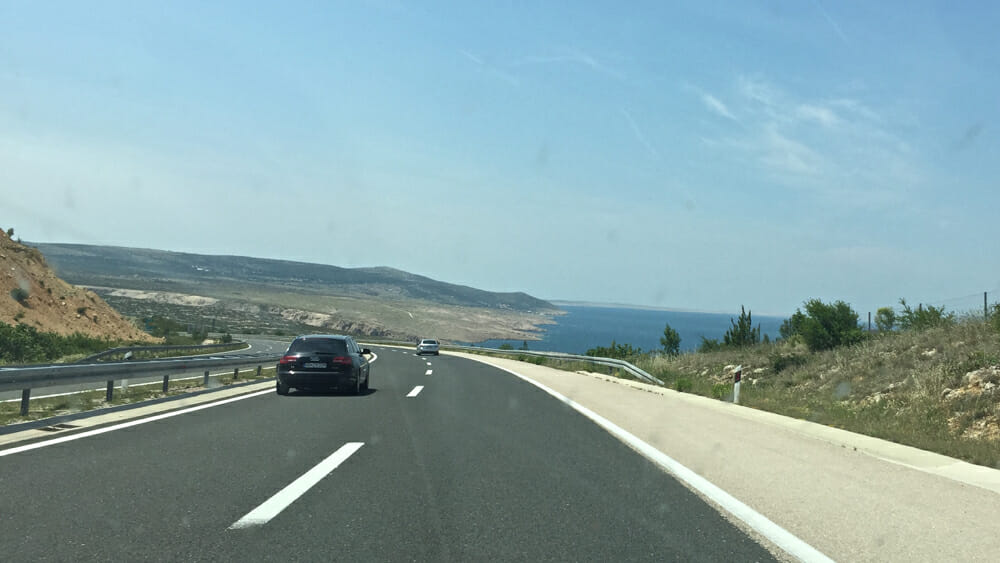Tips to Drive on Highway in the UK

Passing a driving test in the UK requires one to be able to handle the vehicle quite well, to the point that the instructor can recommend them for a license. But that’s not the end of the story; first-time drivers get nervous around heavy traffic and complicated roundabouts. Moreover, they might also confuse lane markings and road markings.
But it’s not only the inexperienced drivers that make such mistakes. There are tons of road markings; some are solid, some are dashed, most are white, but some are yellow or red. With many varieties, even experienced drivers might get confused as everything has a first time. So here are some tips that will likely help you understand the highways better and boost your knowledge, making you a better driver.
Understanding road markings
Road markings are developed to ensure the safety of the drivers and pedestrians. One can’t imagine a busy intersection without well-implemented road markings on it.
For example, when entering a junction, one may come across a white triangle, which means the driver must wait and prioritize the other vehicles, only to enter the junction when the road is clear. This is mainly done in areas with poor visibility.
Similarly, roads with a higher chance of accidents are marked with double lines in the middle while others are marked a single. There are a lot of road markings that, if covered, would take a whole day, so we recommend you read the official highway code provided by the British government.
Check the basics
Sometimes, especially those who just got their license, do not bother to check their car. Checking the car means checking the tires, the engine oil, gasoline level, lights, and mirrors. This seems very basic, but it will save you from having to waste your time on the highway waiting for the help to arrive.
The Slip road
The Slip road is meant for the drivers to accelerate; fairly new drivers might feel intimidated by the scenario, but that is how it works. You should match the speed of the traffic so you can join them along; if you’re too slow or too fast, it can cause the other drivers to brake, leading to a potential accident.
Switching Lanes
A typical UK highway has a three-lane road, the left one being the main road where people who are not in any hurry drive. If you do not need to overtake anyone, just drive in the left-most lane; the other two lanes are just for that reason. If you have to overtake a vehicle on the left lane, take the middle one, and if there's a vehicle you need to overtake in the middle lane, take the right lane.
Lane hogging
Sometimes people just drive in the middle or right lane because it's faster. The UK government noticed this and issued a law against it. If you travel in only the middle or right lane or maybe travel in either of them for an extended period, the cops have the right to pull you over for it.
Braking
While hitting the brakes on the highway, be extra careful as slamming on the brakes too hard might invite a vehicle behind you to hit your rear end. So apply your brakes progressively. But in cases that you can’t avoid slamming on the brakes hard, turn on your hazard lights. That might save you some bumpers.
Overtaking from the left
It is straight-up illegal to overtake from the left, except if one is in slow traffic and the other lanes are moving slower in comparison. So that’s the first case; the second would be if you are in a lane that allows you to leave the highway.
Overtaking
When overtaking, make sure that you are not slowing down the person behind you; keep up a good amount of speed to avoid any mishappenings. Observe for a second to see if some other vehicle is coming up from behind; if the gap in between is substantial, you may take the lead and switch lanes.
But if the gap is not too suitable to get in between or if the other vehicle is ramming up at insane speed, just keep your cool and wait for that vehicle to pass. If you make other drivers brake or, even worse, swerve, it could potentially lead to a dangerous accident.
Speed limit
Overhead digital speed limits are being placed on most of the highways in the UK. The speed limit is based on the flow of the traffic, weather conditions, and accidents. The speed limit signs can easily be seen, but that doesn’t mean you can slack off as they can jump and scare you at moments, and you might just end up with a speeding ticket.
Conclusion
When it comes to driving on the highway, you need to increase your awareness as you will be traveling at higher speeds than usual. However, if you’re very observant and know how to deal with the situations one might encounter on the highway, you will have no trouble at all.
RELATED POSTS
-
 Can You Convert Your UK Driving License to an Australian License?
Can You Convert Your UK Driving License to an Australian License?Posted on 02 23, 2023
-
 5 Easy Ways To Learning To Drive
5 Easy Ways To Learning To DrivePosted on 02 06, 2023
-
 Learning to drive UK VS Ireland
Learning to drive UK VS IrelandPosted on 10 14, 2022
-
 Learning to drive UK Vs Canada
Learning to drive UK Vs CanadaPosted on 10 14, 2022
-
 How to Practice Driver Knowledge Test in the UK
How to Practice Driver Knowledge Test in the UKPosted on 09 27, 2022